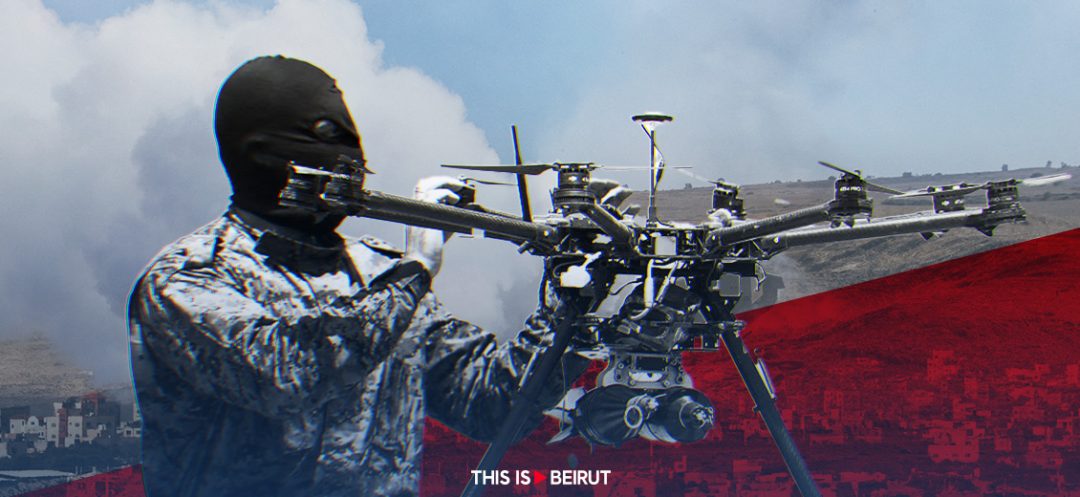Rockets, anti-tank missiles, but also air defense and commandos. Hezbollah’s armed branch is nowadays compared to a modern army. Since 2006, all specialists have agreed that the party’s power has grown significantly. From the thousands of rockets it boasts, to its special forces, we delved into the arsenal of the pro-Iranian party.
On November 8, 2023, the Turkish media platform Anadolu reported that some 1500 Hezbollah fighters operating in Syria have been sent back to Lebanon since the start of the war between Hamas and Israel.
This initiative signifies the strengthening of Hezb’s manpower to face Israel, as gun and artillery fire exchange has intensified along the Lebanese-Israeli border since October 7.
Today, all experts maintain that the Hassan Nasrallah-led party is one of the most powerful non-state organizations in the world. It is also the most important member of Tehran’s self-proclaimed “resistance axis”.
Manpower
It is hard to determine the exact size of Hezbollah’s human capital. The non-state aspect of the organization and its discretion when it comes to disclosing the number of its members and details about its arsenal – because of its conflict with Israel – makes accurate statistics an impossibility.
The available figures are therefore approximate at best, mainly because of strong opposition from actors generally opposed to Hezb, such as the United States and Israel.
A few days following the Tayouneh incident that occurred October 14, 2021, Hassan Nasrallah stated that his party comprised 100000 armed fighters. However, most observers believe that the figures are lower.

According to the Israeli researcher from the Institute for National Security Studies (INSS), Yiftah Shapir, Hezbollah’s fighters are split into two categories. The first includes full-time members, around 20000, while the second is made up of reservists totaling 30000, approximately.
These members are part of different units: light infantry, anti-tank, amphibious and coastal defense. Hezbollah is also one of the most organized paramilitary actors on the planet.
The Radwan Unit
Among these, the Radwan Unit, or Radwan Force, is the vanguard of the party with manpower estimated at 2500 fighters. Similar to the special forces, their training is supervised by the Quds Force from Iran’s Islamic Revolutionary Guard Corps (IRGC). Its objective is clear: to get behind Israeli lines in the event of a full-scale war.
According to the Institute for the Study of War (ISW), hundreds of fighters from the Radwan Unit have been positioned on Syrian-Israeli border and are ready to engage if significant escalation occurs.
Anti-tank Missiles
Hezbollah has thousands of anti-tank missiles, including state-of-the-art the Russian AT-14 Kornet and the Iranian Toophan. The Center for Strategic and International Studies (CSIS) in the United States reported that most of these weapons have been supplied by Iran, Russia, and China.
There are no accurate figures pertaining to the number of fighters who know how to handle these missiles. We know, however, that in 2006, these fighters made up 20% of Hezbollah’s total manpower. It is highly likely that the pro-Iranian party still has the same percentage, if not more.
Having been put to use regularly along the southern border since October 8, Hezbollah resorts to these weapons not only against Israeli army vehicles, but fortifications also. According to American analyst, Anthony Cordesman, these arms have already killed more Israeli soldiers than the infantry clashes from the July 2006 war.

Armor
On November 11, 2016, Hezbollah revealed to the world an otherwise hidden part of its arsenal; during a military parade in the Syrian town of Al-Qusayr, the fighters were seen operating tanks and other armored vehicles, including Russian T-72’s, a relatively high performance tank.
Such heavy machinery was added to Hezbollah’s arsenal in order to adapt to the Syrian battlefield, wherein the tanks in question were advancing in open terrain, as a conventional military force, alongside Syrian, Russian, and Iranian units.
That being said, such means are unlikely to be used on the Lebanese front. First, Lebanon’s mountainous terrain is not tank-friendly, and second, the Israeli air force could easily make short work of these armored vehicles. In this context, Hezbollah will most probably engage in asymmetric combat, as it did in 2006.

Close and Mid-range Rockets
Hezbollah’s main strength lies in its rockets, more than 130000 according to the CSIS. But most of these are close-range (8 to 40 kilometers) and are estimated at 100000.
As for shorter range systems (8 kilometers), they can be used in tactical combat as support for infantry units. They played an important part in the battle of Al-Qusayr in 2013. The models most used were the Iranian Fajr-1 and the Chinese Type-107.
The main role of this arsenal is to deal high damage to remote Israeli military facilities and population centers located in the north. The projectiles used have a range of 40 to 75 kilometers, they include the widespread Soviet Grad rockets.
When launched in high numbers, they can completely saturate Israeli anti-missile defense systems, such as the famous Iron Dome. The longest range missiles from this category – the Iranian Khaibar-1 is one of them – are capable of hitting urban zones like Haifa.

Long-range Arsenal
Hezbollah also has hundreds of long-range (200-550 kilometers) missiles, destined for use against Israel from distant positions in Lebanon. These will make detection from the enemy more difficult. They can hit targets – such as Tel Aviv – that other, shorter range projectiles can’t.
This arsenal is mostly Iranian made, such as the ballistic missile Fateh-110 (250-300 kilometers), although some are fabricated in Russia and Syria. The aforementioned missile was improved, for higher accuracy. The last estimates have shown that 20 to 200 missiles have a precision of 50 meters. Unconfirmed reports shared by the Israeli government state that Hezbollah also owns Russian Scud missiles whose range can go up to 550 kilometers, according to the CSIS.

Anti-aircraft Defense
In 2006, anti-aircraft systems used by Hezbollah – ranging from shoulder-fired missiles to anti-aircraft shells – were considered as obsolete, allowing Israeli warplanes to fly almost freely in Lebanese skies.
Subsequently, Hezb sent tens of its members to train in Syria with modern systems. That could explain why the Israeli army has been targeting Hezbollah’s convoys in Syria in the last years. More recently, the American administration published a report expressing its concern over state-of-the-art SA-22 Pantsir batteries having been sent to Hezbollah by the Russian paramilitary group Wagner.

Drones
Hezbollah does not have warplanes, but one of its units is specialized in drones. Most of them Iranian made, the drones in question are used for intelligence missions and assault, like the Shahed-126, but also as loitering munition, such as the Ababil.
Hezbollah has set up a number of airfields in areas under its control, with the aim of establishing operating bases for unmanned aircraft, such as in Hermel.
Additionally, the pro-Iranian party has been using mostly Chinese made commercial drones since the start of the war in Syria. Some of these also have attack capabilities, much like the ones used by the Ukrainian army against Russia.

Amphibious Units
In addition to weapons used against ground targets, Hezbollah also has Russian made anti-boat missiles, like the Yakhont. It also has projectiles made in Iran. The number of units it possesses remains a mystery, however. These missile batteries are operated by Hezb’s amphibious unit that includes diver teams specialized in assault and intelligence.
Beyond being able to launch operations at sea and attack the Israeli fleet, the amphibious unit is a force to be reckoned with when it comes to the interests of Tel Aviv. In fact, it is a direct threat to gas drilling platforms in Karish.
It is worthy to note that Hezbollah has already flown drones in this area in the summer of 2022, but the devices were shot down by the Israeli army.







